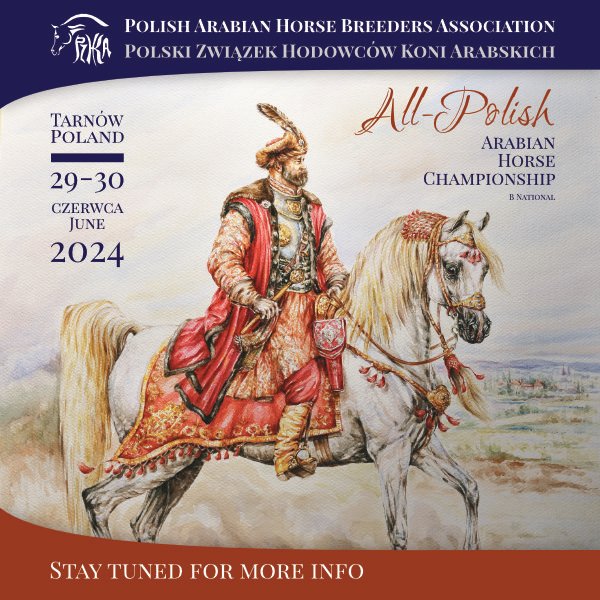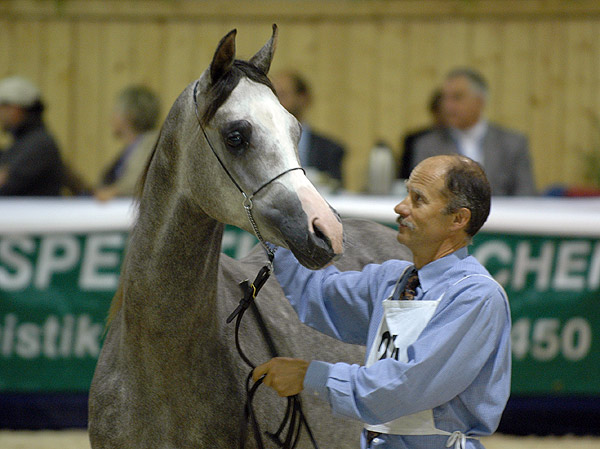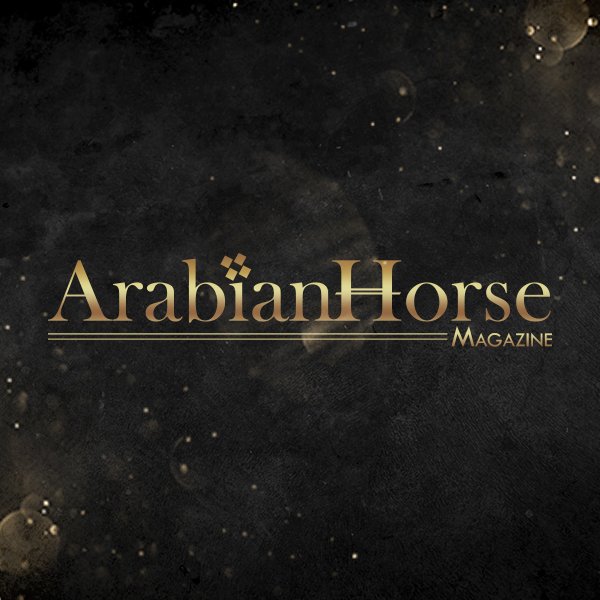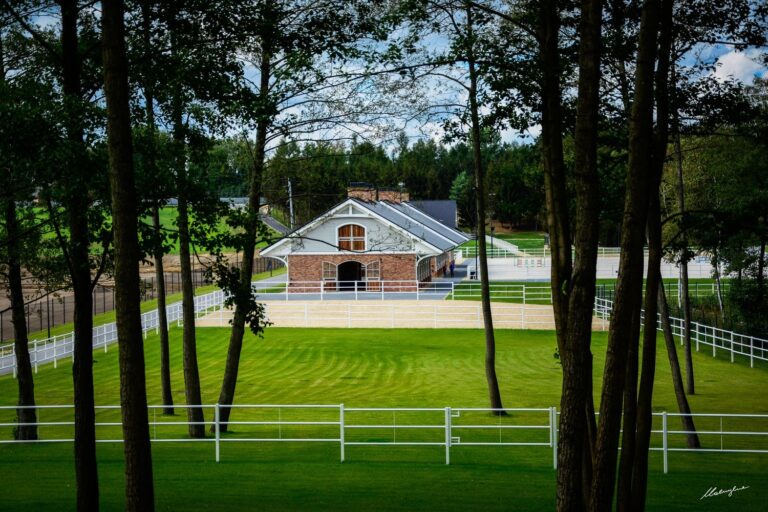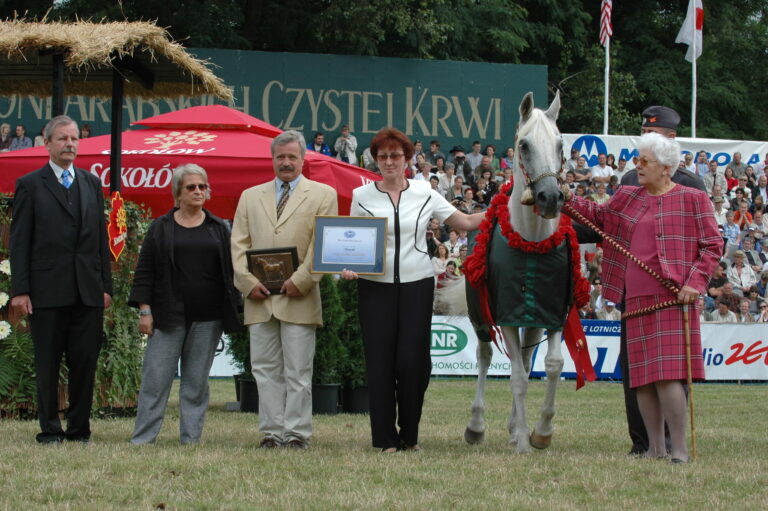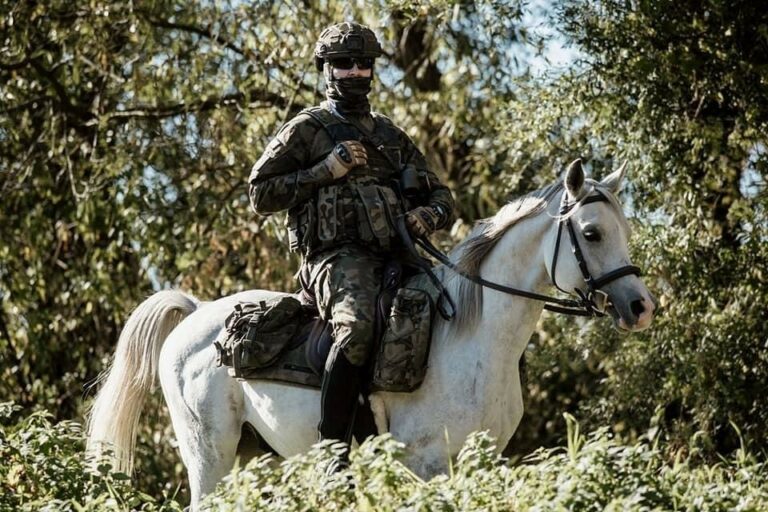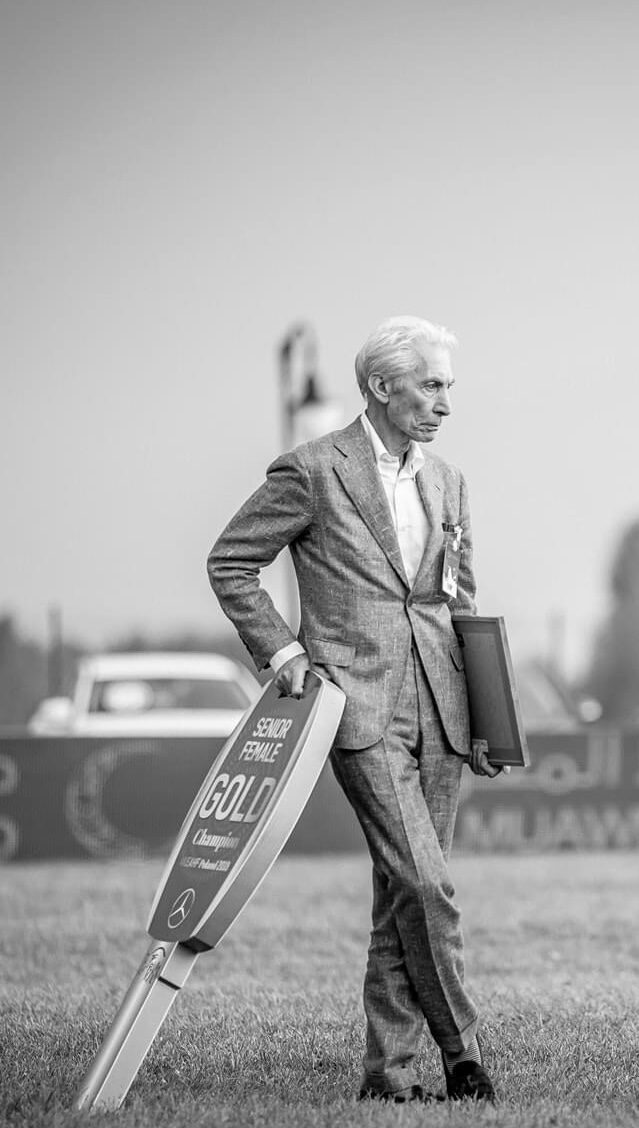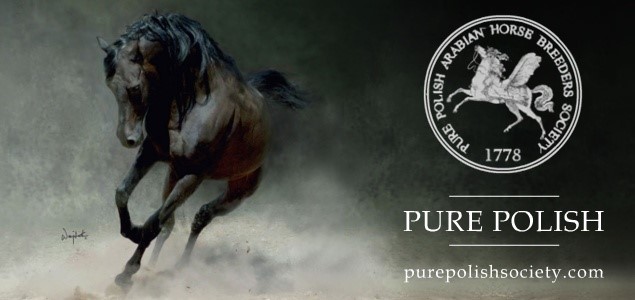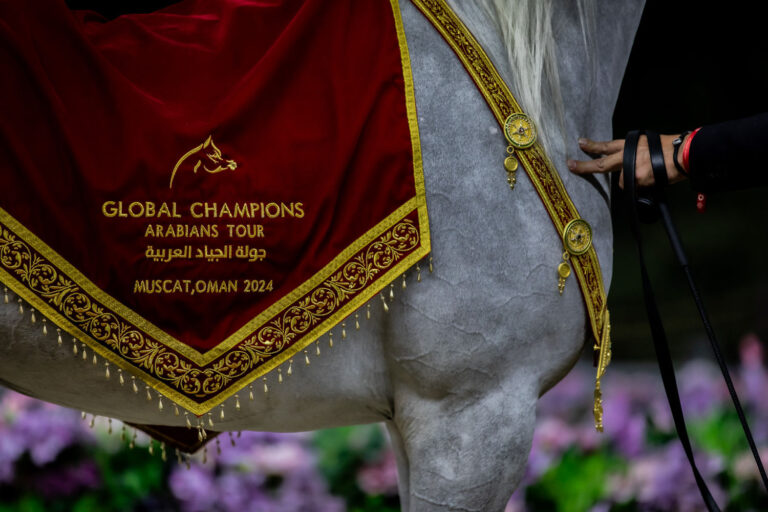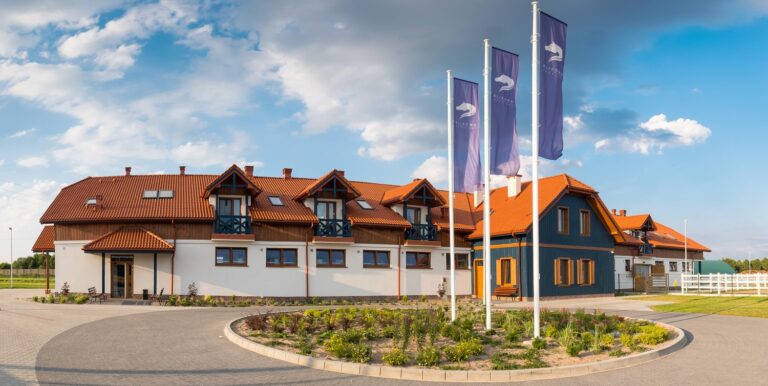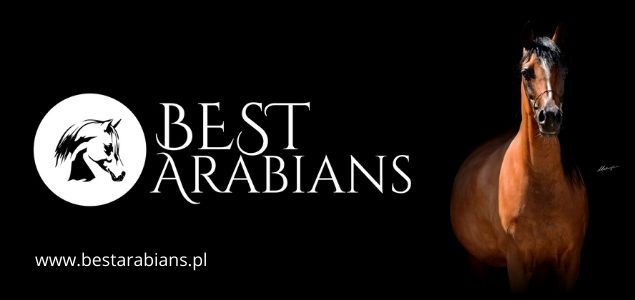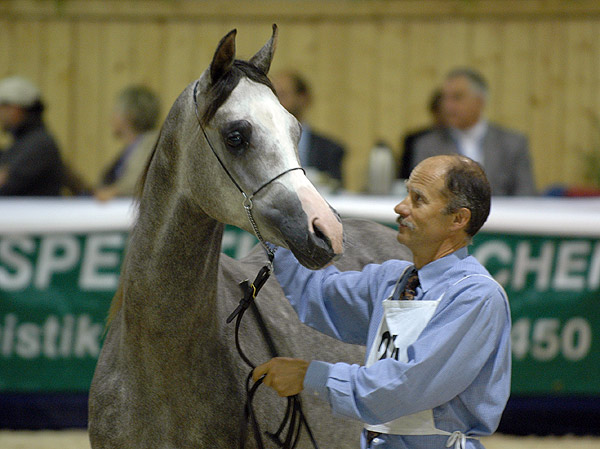
WOJCIECH KOWALIK, named Best Handler of this year’s Polish National Championships in Janów Podlaski, nearly forgot how winter looks like in Poland. For he spent many of the winter months in Saudi Arabia, conditioning horses for the Middle Eastern shows. However he feels more like a breeder than a handler, although he constantly lacks time to manage his own stud. Today he shares with us his experiences as both a trainer and breeder.
Monika Luft: Can every Arabian be made into a showring star?
Wojciech Kowalik: Rather every star needs a good setting. For show purposes we choose horses with a “divine spark”, those that are willing to present themselves, that have that special “something”. But every horse, even the most beautiful one, has to be properly prepared. That’s what conditioning and show training is for. Of course a good presentation is also important later on.
M.L.: What requirements must a horse fulfill to make investing in him worthwhile?
W.K.: In Poland we have a nice term for that: a bouquet. Horses that combine beauty, charm and a flowing, dynamic movement are candidates for show stars. I very much like Thoroughbreds, which are the greatest racehorses. Anglo-Arabians, which additionally are successful in show jumping, can be lovely. But the Arabian has that something special, which bids you to spend the rest of your life with him.
M.L.: Does every trainer have his own training methods or are there general rules?
W.K.: There are certain outlines which are followed, but every trainer also works out his own methods. If a horse is prepared for a show in accordance to those rules, there shouldn’t be any problem with someone else presenting him in the ring. As in every profession, also here slight, elusive details separate the great trainers from the good ones.
M.L.: How would you describe the character of a showhorse trainer’s work in the Arabic countries?
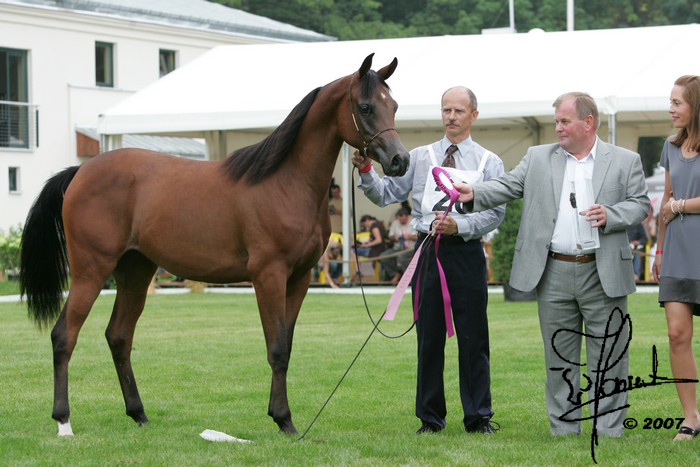
W.K.: The work done with the horses is similar to the one in Europe. Although different climate conditions and higher temperatures force us to work at different times of the day, it is easier to maintain horses in a short coat, though they still must be shaved. A larger number of people handling the horses – mostly Indians and Filipinos – is very helpful in training. When it comes to the attitude of the owners, among who are sheikhs, crowned princes and tent-dwelling Bedouins, it remains similar to our own. For the Arabian people breeding is both a passion and a tradition. The Arabian horse is an integral part of the culture and literature of the East.
M.L.: What influence do the breeders from the Arabic countries have on world breeding today?
W.K.: Without a doubt they are the ones who currently drive the economic situation for Arabian horses, buying them all over the world. Nevertheless I believe that in the future, thanks to successful matings, they will be able to support world breeding as was the case with Gazal Al Shaqab and his son Marwan from Qatar. We must also keep in mind that there are breeders outside the Persian Gulf who can spend large amounts on the purchase of a good Arabian, as was the case with the filly El Dulcinea by Enzo out of El Dorada, bought by Mrs. Lenita Perroy from Brazil or the colt QR Marc to Belgium. We shouldn’t generalize that only buyers from the Arabian Peninsula drive the market. They are a good, but not a sole business partner.
M.L.: Do the cultural differences require special preparation for the job in these countries?

W.K.: I didn’t mind the differences. I recall the years spent in the countries of the Arabian Peninsula very well. Because of the climate the workday schedule in the stable differs slightly from the one at home, there is a lack of vast pastures and the temperatures can be strenuous for both people and animals. The training that I gained at the Polish State Studs, enriched with the experience from traveling, was enough to organize work in such a culturally distant country. At the same time those differences enriched my professional practice and taught me many things. The Peninsula is the cradle of Arabian horse breeding and it is a true pleasure to observe Arabian horses in their natural surroundings.
M.L.: What role did Esparto play in the popularization of Polish Arabians in the Middle East?
W.K.: Esparto, leased to Ajman Stud, once again ignited interest in Polish breeding, reminding everyone about its achievements. The invasion of trainers, especially American, who promote horses from the US, is difficult to stop. If we want to do business on the Arabian Peninsula, we should be more expansive and present horses such as Esparto more frequently at shows in those regions. Finances are probably a barrier, but in my opinion it is a matter that needs some consideration. A lease is a good solution, one that does not impose costs on the owner. Fear of the different climate conditions is completely unjustified.
M.L.: When and how did you become an Arabian horse trainer? And a breeder?

W.K.: My adventure with Arabian horses began at Białka Stud in 1984. It was always my dream to breed horses, my ambition – to breed outstanding horses, which could be used for showing, racing or endurance races. In order to prove that, together with Jerzy Urbański, the current director of Białka, we began training horses for endurance races. At the same time I tried presenting horses at domestic shows. Good practice turned out to be foreign travels and contracts – England, Sweden… However I never counted my wins as a handler, it is not of that importance to me. I do not collect clippings, I don’t pose for photos… My passion always lay with the matings, awaiting the foal. What can a certain stallion produce with a given mare? When I look at a horse in the paddock, that’s what I think about.
M.L.: The shows remained, while the endurance rides were given up by you.

W.K.: The rides were important, because they showed that the Arabian horse not only pleases the eye, but can also be useful. I gained the title of Polish Reserve Champion twice. First atop Alahar, bred by Białka, by Haracz out of Albania. It was a horse that proved his merit at the racetrack as well – he was always placed, almost without any injury. After my departure from Poland Jerzy took over the horse, placing 8th atop him at the European Championships in France. Up to now it is the best Polish result in endurance races in the European Championships. I owe the second title of Reserve Champion to Kurozwęki Stud and the gelding Trap. Now in my stable in Marcinków awaits the endurance-ready gelding Serf and I do not lose hope that I will compete on him one day. I will begin training in my spare time (laughter).
M.L.: Your fascination with horses began with…
W.K.: My grandfather’s house. Already as a child I took care of horses, I rode them, drove them… Those were the beginnings.
M.L.: Do your dreams rotate around training or breeding Arabian horses?

W.K.: The dreams concern breeding, although it is easier to gain success when preparing a horse for a show. It takes less time: 4, 5, 6 months and the media effect is rather certain. Breeding, as we know, is more time consuming, noticeable only by the specialists. You have to wait long for the results. And often not many remember the initial creator of the breeding concept. Horses which I have bred at studs in Poland, England, Scandinavia or even Saudi Arabia always were and will be attributed to the owner. Hence my idea with Marcinków and huge satisfaction from breeding when my colt Boreas won the two year old colts class at the Nationals this year. It wasn’t the only success of private breeding at this show – three other horses also won their classes. It was my unmistakable success, as all were trained and presented by me.
M.L.: Are there no conflicts of interest when training your own horses next to other people’s?
W.K.: Such a conflict may indeed arise. Winning a class with your own horse can turn against the trainer. But I will not give up, because for the first time I have the chance to work under my own name. It’s true that if three horses stand in one line and one of mine is among them (as was the case in Janów), the client can always question: “Will you also show my horse that well?” Being a professional I put in every effort to have every horse presented the best way I can.
M.L.: What would you advise beginning breeders who dream of successes in the showring?
W.K.: One of the breeders joked that he began his breeding with ponies – a small animal, a small problem. And that definitely is a method: starting out slowly, trying to get to know the pedigrees, attending shows, trying to ask ourselves what exactly we want to achieve. The foundation in breeding are well producing mares. But this is not math, here two plus two doesn’t always equal four. Besides experience and knowledge you have to have a bit of luck and the right sense.
M.L.: What do you think about the Straight Egyptian trend? Doesn’t it flourish at the expense of the Pure Polish trend?
W.K.: Each trend passes. Such was the case with Russian horses for example. In my opinion the SE trend is currently withdrawing. Of course there are breeders who prefer horses from the Egyptian lines and are ready to pay any amount for them. However the SE group is not as numerous at shows as it was not so long ago. The successes of the Egyptian horses were more the effects of the judges’ preferences, who bred these horses, rather than the resemblance of their actual value. Though among this group there are also outstanding individuals – for me such a horse is the stallion F Shammal, Laheeb left good mares in Michałów, and it will be interesting to see how his son Al Lahab does, having a very good show career behind him.
M.L.: What occurrences take place in the world of Arabian horse breeders? What results from the observations of this year’s All Nations Cup in Aachen?
W.K.: The show in Aachen proves that the most acknowledged sires in breeding show horses today are: Psytadel, WH Justice (from the line of Padrons Psyche), as well as Gazal and Marwan Al Shaqab. This can lead to the narrowing of the genetic pool and a large inbred. Definitely more beneficial for breeding is a variety of bloodlines.
M.L.: How can one purchase a good Arabian horse in Poland today?
W.K.: That’s a very personal matter. It depends what the horse is to be used for and what amounts are we willing to pay. Different sums are paid for race, show, endurance or recreational horses. The answer to these questions will form a guideline for us.
M.L.: Is show training torture for the horse? The American Arabian Horse Association (AHA) appealed lately to its members to boycott the show at Scottsdale, calling it “the ugly secret of the business”.
W.K.: It’s a complex problem. Training is always associated with a certain regime and placing demands. We have to pose a question: where do the limits lie? What serves to achieve the goal, what is an unjustified abuse of the animal? Training is an exertion for the animal, but the lack of such exertion doesn’t mean that the animal feels better. I have not met with trainers abusing their rights in any of the countries that I worked. But I cannot rule out that such situations take place.
M.L.: Are show horses happy?
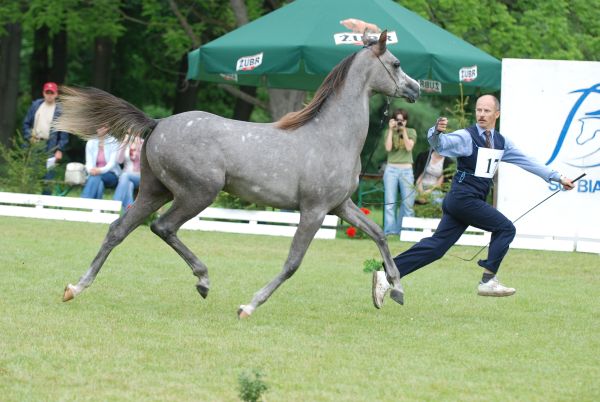
W.K.: The horse is happiest when he can roll in the sand and run in the field. When he has no responsibilities and he can nip at the grass. This however cannot be compatible with show training. Though I try to allow for some free time on the pasture in my training methods. The horse has a mental rest then. This is also connected with the weather – we cannot put out a trimmed horse when it rains or is cold. Nobody would like to be thrown outside without clothes in the middle of winter. But in the summer, when it is warm – why shouldn’t they go out? If someone has the right conditions, he can let a horse out in the morning, before training, for an hour or two. After that is time for work. But when I look at Arabian horses, trotting in the ring with their tails raised, in the stage lights and amidst the applause, I cannot help but notice that they are where they belong.
M.L.: Do horses like shows?
W.K.: Some do for sure. They are those stars of the ring that you asked about at the beginning. Such horses are not startled by the noise, not frightened by the lights or the music. A shy horse, without courage will never shine in the ring.
M.L.: And is showing horses a pleasure?
W.K.: If it wasn’t, I wouldn’t be doing it.
M.L.: How do you see the future of the Arabian business in Poland?
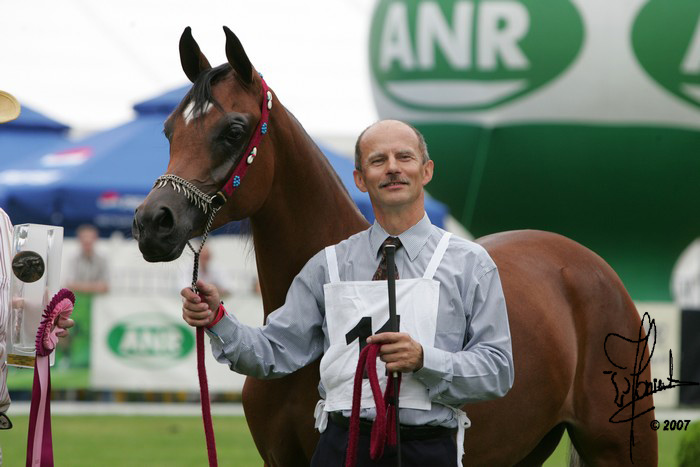
W.K.: I don’t like the term “business” in breeding. One has nothing to do with the other. Business is concerned with quick money, while breeding is a long-term process. If someone treats it like a business then I would advise to take up something else. In breeding success comes late. It may never come at all.
M.L.: But breeding a good stallion is a business.
W.K.: It can be. When having a very good stallion you can make money, especially since there is the possibility of sending semen. But it has to be a stallion of international significance, not local. However the breeding and promoting of such a stallion equals certain costs. It is never an easy profit.
M.L.: There is a general opinion that in Poland good stallions are not born.
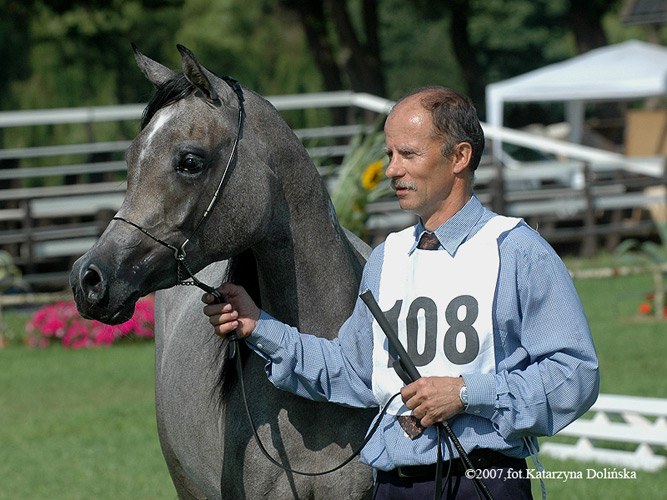
W.K.: There aren’t many superb stallions in the world also. The value of a stallion is evaluated by the achievements of his progeny. I still remember the praise for the last daughters of Bandos, the high prices achieved at the auctions by mares by Eukaliptus. I think that the modern stallions, as for example the phenomenal Ekstern, deserve attention and acknowledgment. Let’s give them time and be patient. Polish horses are said to grow more and more refined with age – they are like good wine – the older, the better.
WOJCIECH KOWALIK
An Animal Husbandry graduate from the Agricultural University in Cracow. During college he trained in the University Riding Club, in 1982 he took up work at Skrzydlów Stud. Two years later he was employed as the head breeder at Białka Stud. He worked at studs in Great Britain, Sweden and Saudi Arabia. He trains and shows Arabian horses and is also the owner of an Arabian horse stud. Chosen Best Handler at the Polish National Championships at Janów Podlaski in 2007.


